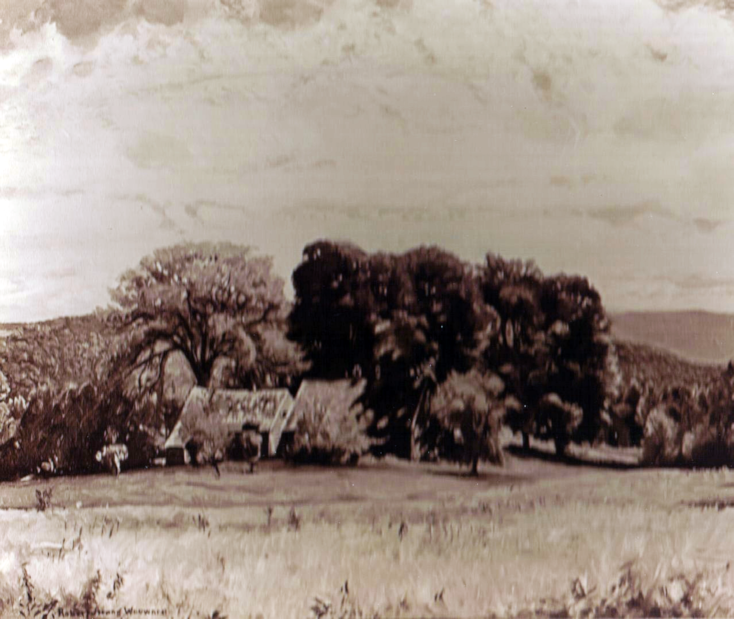Quick Reference
Unknown: most likely
mid-to-late 1930s
West Halifax, VT
Oil on Canvas
Landscape
Pastures
25" X 30"
Unknown
Unknown
NA
Related Links
Featured Artwork: Unnamed: Late Summer in Halifax
RSW's Diary Comments
Diary Comments for Aged Roofs:
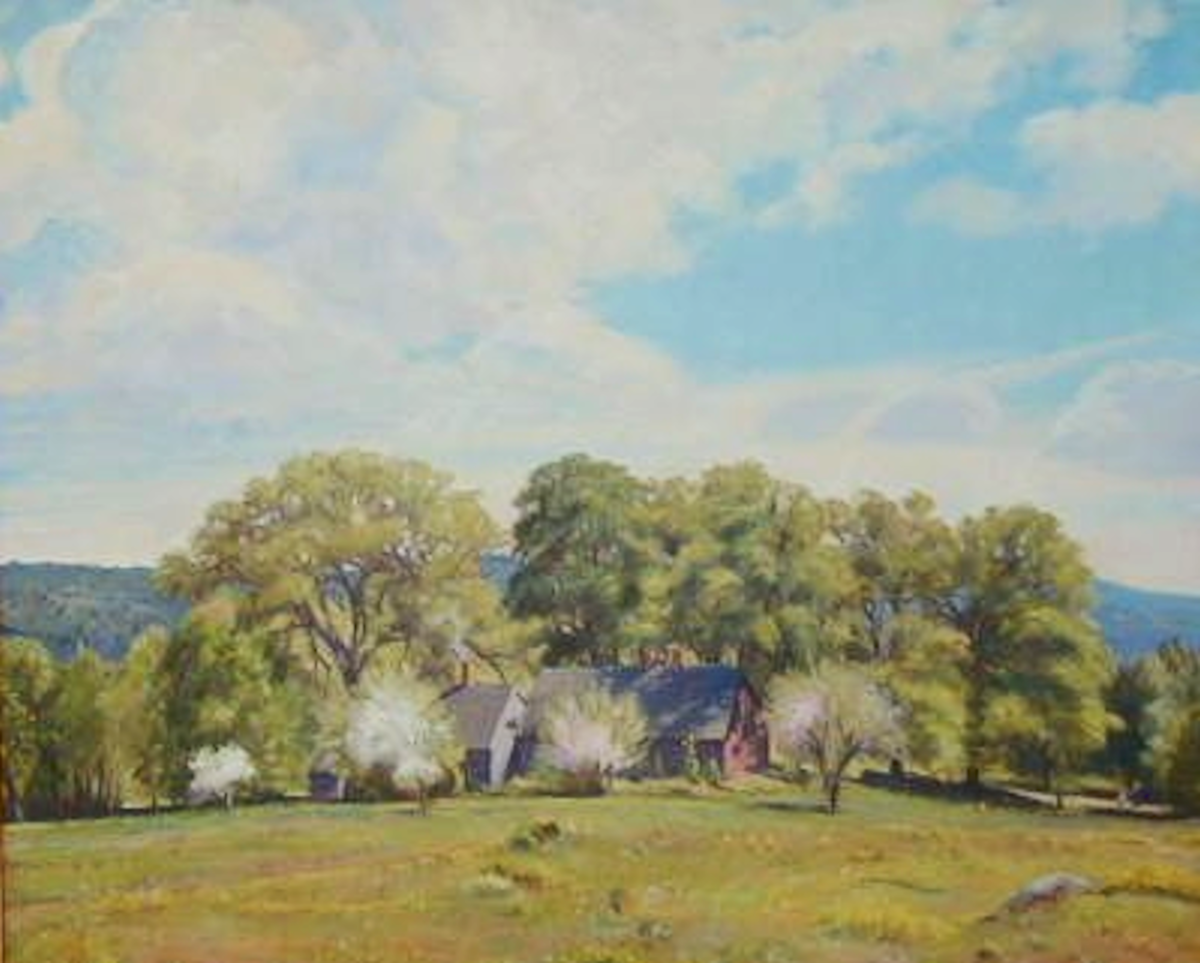
 Aged Roofs, 1935
Aged Roofs, 1935
A similar scene to Spring Comes to New England
(see below). There is little to no difference at all.
However, there are clear differences in sepia print
above, such as the sky and shadow on the house.
"Painted 1935. Rear of Halifax house from top of mowing in back. Exhibited quite generally about the country. Acquired in the summer of 1945 by my dear friends, Mr. and Mrs. F. Earl Williams of Gardner, Mass."
Comments on the back of a sepia print:
"Late summer in New England. Foreground of uncut old grass, pale yellow and ochre. $450."
Editor's Note:
Years ago the sepia print above got mislabeled as Aged Roofs. In our recent audit of images,
fresh review of and, update to the artwork pages exposed the error. The difference in the skies alone are enough to see they
are not the same. What usually happened was that
Dr. Mark would come across an unlabeled sepia and compare it with what he had available to him. Then later we would get
new images and confirmation of the painting name and not double check that the other documents match.
What
else does not match is the season, the apple trees in bloom above and not in the sepia. So the information on the sepia supplied
by Woodward is correct. It is a late summer painting.
There are two chalk drawings appearing around the same time
period we believe this painting was made and their names have piqued our interest. But this is clearly not a chalk drawing.
Woodward's pastels have very distinct aspect ratios and this painting does not match that quality. The chalk drawings are:
In the Summer Haze and New England Summer.
Additional Notes
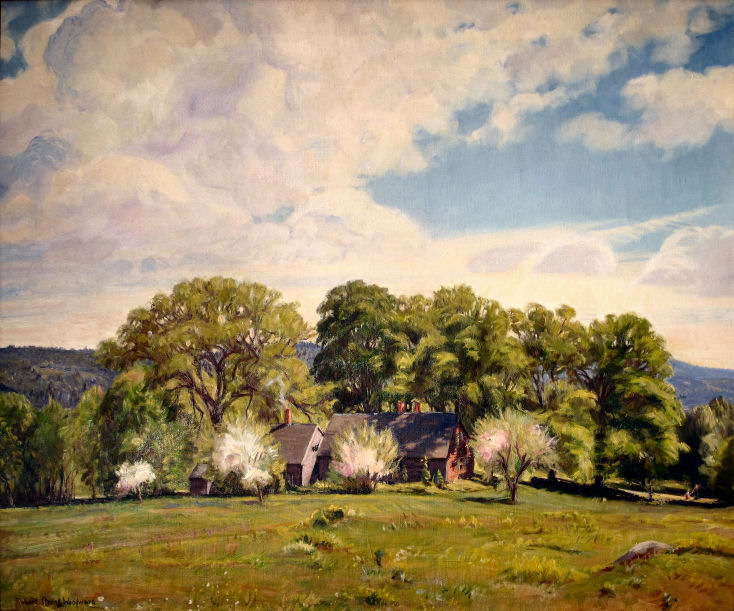
 Spring Comes to New England, 1947
Spring Comes to New England, 1947
A similar scene to Aged Roofs, in fact, there is very
little difference at all between the two paintings.
The skies and shadows all appear to be the same,
yet, both names are confirmed by their owners.
 This painting of which we only have the above sepia print is
probably not unnamed. The term "unnamed" refers to the number of paintings there are that are not named for
any number of reasons: they were bought direct from Woodward's studio without a name; or given as a gift by
Woodward which was quite common, or they remained in his estate, probably in his storage area, after his death
and were typically unfinished in some way but Woodward's cousin
Florence sold some of them to settle up the estate's expenses and what have you after his death.
This painting of which we only have the above sepia print is
probably not unnamed. The term "unnamed" refers to the number of paintings there are that are not named for
any number of reasons: they were bought direct from Woodward's studio without a name; or given as a gift by
Woodward which was quite common, or they remained in his estate, probably in his storage area, after his death
and were typically unfinished in some way but Woodward's cousin
Florence sold some of them to settle up the estate's expenses and what have you after his death.
This painting most likely has a name by reason that there is a sepia print and that Woodward actually wrote
notes on the back of it. He only did this when sending the sepias to galleries looking to exhibit his work. The
description served as the color commentary before color pictures where available. Perhaps it was not yet named.
If a gallery or exhibition accepted it to hang at their show, only then would Woodward be pressed to name it.
All paintings that exhibited were named. We do not know of a single exception.
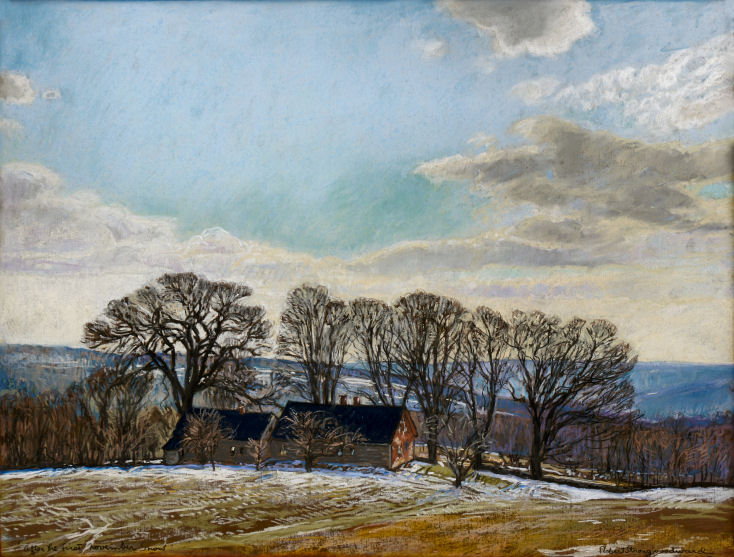
 After the First November Snow, Year unknown.
After the First November Snow, Year unknown.
The fourth painting, this a pastel, of Woodward sit-
ting himself above the hay field behind the house.
 For years, we numbered paintings to which we did not have
names, but then as we learned the painting's name that number would be retired. However the impersonal
numbering also made it very hard to remember what the painting was and a lot of doubles started to appear
and the whole thing became a mess.
For years, we numbered paintings to which we did not have
names, but then as we learned the painting's name that number would be retired. However the impersonal
numbering also made it very hard to remember what the painting was and a lot of doubles started to appear
and the whole thing became a mess.
What we decided to do was give them "unofficial" names.
These names either reflect another painting it may be related to or reminiscent of and in other instances, we
tried to name it in a way Woodward might do so, focusing on the literalness, like he often did. It makes them
so much more memorable.
This painting was not so easy. We debated what to name it because
we had not yet made the connection to the mislabeled Aged Roofs print. Once we made that
connection, the name was a no-brainer.

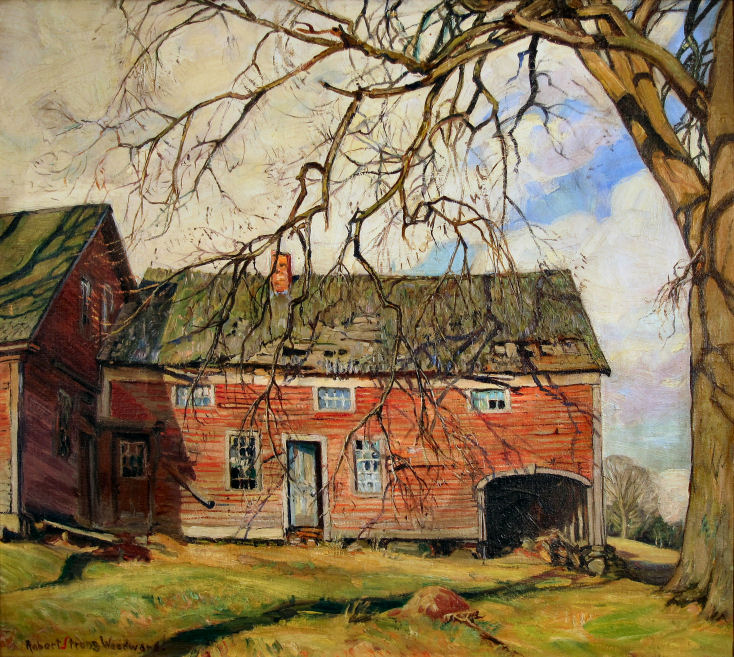
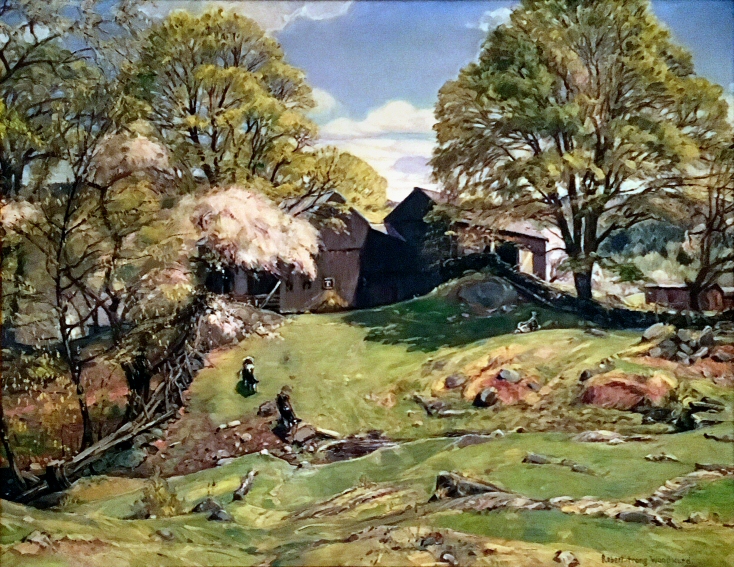
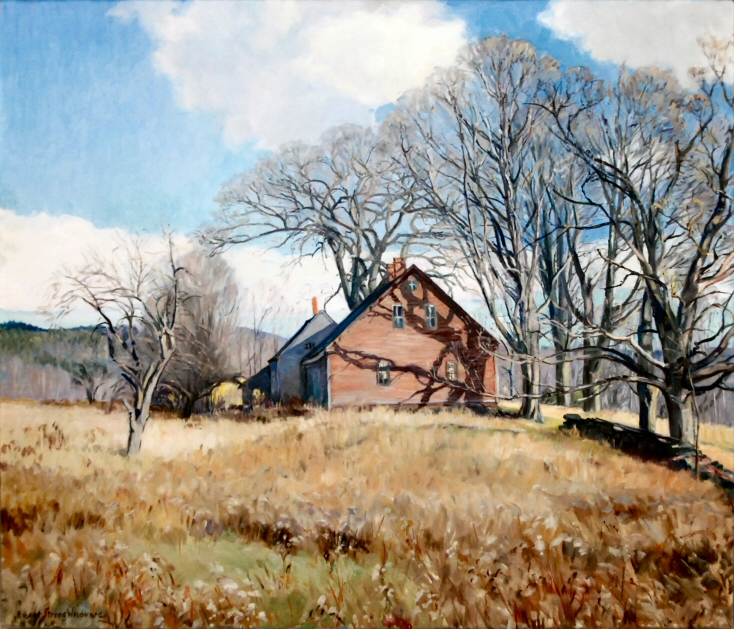 the
the 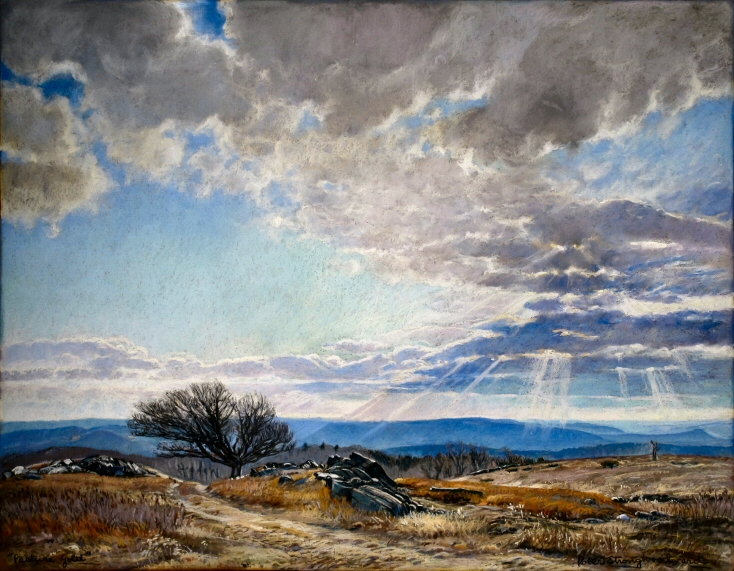
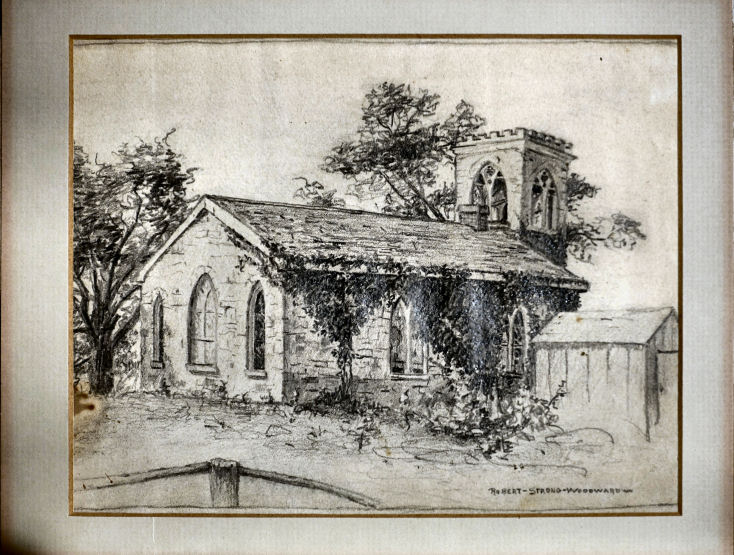
.png)

